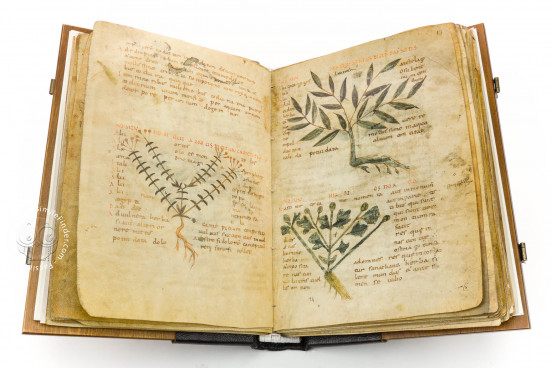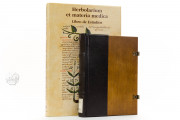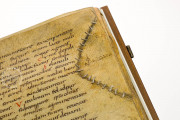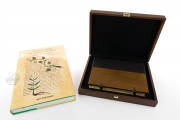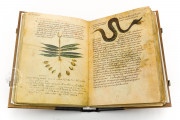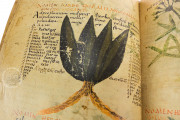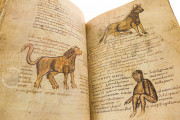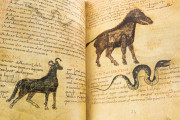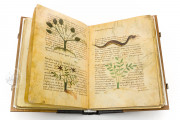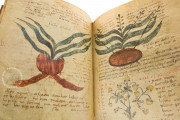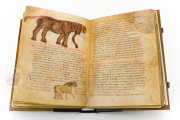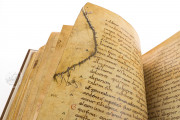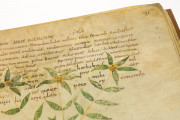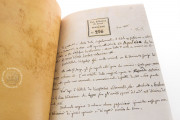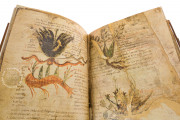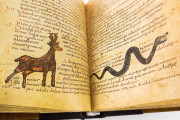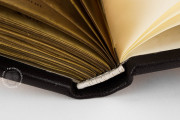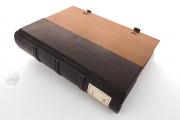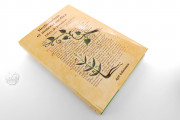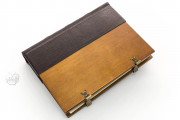Made in the late tenth century, the manuscript known as Herbolarium et materia medica is a miscellany of medicinal and magical texts adorned with numerous illustrations of plants and animals, spanning over 100 folios. Originally, the codex was meant to support the daily study and practice of medicine, and it testifies to the importance of ancient medical heritage in the High Middle Ages, the willingness to preserve it, adapt it, and integrate it into medieval daily life.
Folios 1 to 46 include colorful illustrations of the plants and animals used for producing medicinal remedies — a few chapters also feature images of snakes. A few scattered representations were also added to folios 50-81, while the ones following folio 81 lack illustrations.
Practicing Medicine in Medieval Europe: Magical and Herbal Remedies
The main texts included in the manuscripts are the following: De herba uettonica liber by Pseudo-Antonius Musa; Herbarius by Pseudo-Apuleius; De taxone; Liber medicinae ex animalibus by Sextus Placitus; Curae Herbarum; Curae quae ex hominibus fiunt y Curae quae ex animalibus fiunt; Liber pigmentorum; Calendario dietético; Dies aegyptiaci; Lunas de somnium.
A wide number of additional texts were added to the codex both in the years following its production and at a much later stage. Subjects range from the use of weights and measures, herbal remedies made with plants such as lepidium, caustic remedies, and magical remedies, such as the "benediccio ad caseum" on fol. 39 v., the benediction of cheese that was believed to help discover the whereabouts of thieves.
Many Unknown Scribes, and a Mysterious Origin
The manuscript was written in Latin in Caroline Minuscule script in the style of the late tenth century. Nearly all titles and initials, as well as the instructions for the illustrator, are in red. Some folios show a different pen stroke than the one used in the rest of the manuscript, which has led scholars to believe that the text was penned by various hands. This claim is also supported by the presence of marginal annotations of later epochs and various shades of ink.
On fol. 35, a Latin sentence reads: Lodericus me scripsit in Mantua (Loredicus wrote me in Mantua). Although it is hard to determine where and when exactly the codex was made, the sentence has allowed scholars to ascertain its presence in Northern Italy.
We have 1 facsimile edition of the manuscript "Herbolarium et materia medica": Herbolarium et materia medica facsimile edition, published by AyN Ediciones, 2007
Request Info / Price

